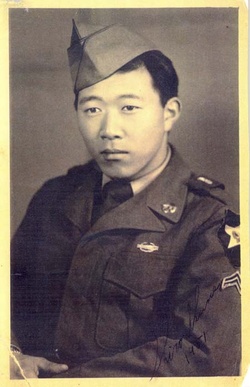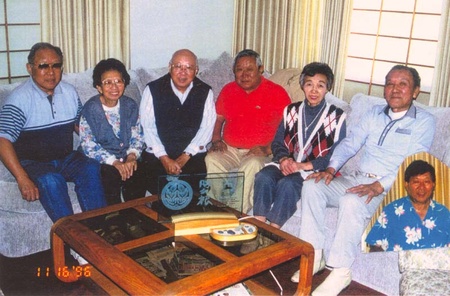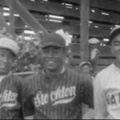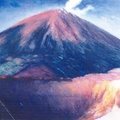There were surprisingly many Japanese-American soldiers who served in the Korean War, many of whom fought bravely in the footsteps of their predecessors from the 100th Battalion, 422nd Combat Team, and MIS, and 246 of them sacrificed their precious lives for their country. Among them were second-generation Japanese who experienced World War II in Japan and returned to the United States after the war. I would like to focus on one of them, Shiro Akune, who spent his childhood in Mansei-cho, Kagoshima.
He was born in Tarlac City on August 2, 1930 as the fourth son of Ichiro and Yukie Akune, who were from Kominato, Mansei Village, and moved to his parents' hometown with his family at the age of three. In April of the year the war ended, he entered the Naval Signal School in Mitajiri. Upon graduation, he was assigned to the Second Marine Corps in Sasebo, where he returned to Mansei when the war ended. On June 20, 1950, while on his way back to the United States in Tokyo, he heard the news of the outbreak of the Korean War, and set off by ship from Yokohama for Kuwana Port.
What was Shiro's (hereafter referred to without honorifics) mental state during this time?
-- He narrowly escaped death at the end of the war, but if he went to the United States, where conscription was mandatory, he would have had to take part in another war. And how could he have put on the military uniform of a former enemy country without any hesitation after only five years?
"My eldest and second brothers, who fought as U.S. soldiers on the Pacific front, came to Japan just after Japan's defeat in the war. Harry (my eldest brother) came to visit my father, and he was the first American soldier Mansei saw. That night, gathered around my father, a warrior of the Russo-Japanese War, Saburo (my third brother), who was in the Japanese Navy, and I, my brother who was my enemy, got into a heated debate about the pros and cons of the war and the rights and wrongs of Japan and the U.S. We were two against one, but rather than being persuaded by my brother who knew both Japan and the U.S., the weight and emptiness of the defeat was overwhelming during the discussion. My father remained silent the whole time.
Of course, there were many people around me who had lost family members on the front lines or in air raids, and many who had returned from the war. But I just couldn't resist the charm of America that my brothers told me about, and I simply wanted to return to the U.S."
It is said that around 20,000 second-generation Koreans in Japan (known as "postwar returnees") crossed the sea in large numbers between 1948 and 1952. However, because their citizenship had been frozen during the war, various procedures had to be completed before they could obtain passports.
At the US consulate, Shiro is subjected to harsh words from the young consul. "You are one of those who aimed a gun at your country. How dare you say you want to go home." However, at around the age of 15, he volunteered for demobilization. He had no right to vote, and could not hold any government position in Mansei's rural area. But his age turned out to be an unexpected ally. However, Mansei's journey from Yokohama to Soko to Rafu would eventually lead him to Korea.
After arriving at his dream destination, Shiro begins working at San Lorenzo Flower Gardens, a major carnation grower in Torrance. However, on February 21, 1951, before he has mastered the American way of life or English, he is drafted and reports to FORT ORD.
-- When you received the notice? What was your daily life like in the U.S. military?
"My elder and second brothers kept nagging me about how I should prepare myself as a Japanese, but they had experienced discrimination and combat, so it was powerful and I didn't panic. I also thought to myself, "Maybe this is the life I gave up as a Japanese soldier."
That's right, it happened during training when we were marching, but we had a hard time keeping up with the front because we were short-legged. Then it was the other way around, and we were chased from behind. The instructor sergeant called out "double time," but I didn't understand what he meant. I stopped when he yelled it out a second time, and asked, "What's bubble time?" It was a big problem. Not only did the march stop, the white soldiers started laughing, and some even started whistling. I thought it was a big deal, but nothing happened. If this had been the Japanese Navy, I would have been beaten half to death."
He only served in the Navy for about four months, but compared to the pain and suffering of the mental baton. And the injustice of being beaten by a superior officer for no reason, the American experience was like a picnic, if that sounds harsh. The food was plentiful and they paid him. He said that basic training was not a struggle at all.
After six weeks of basic training, the war situation was tense, so he flew to Japan. He then landed in Busan from Sasebo. Assigned to Company B of the 1st Battalion, 9th Infantry Regiment, 2nd Infantry Division of the U.S. Army, Shiro participated in the Battle of "Heart Brake Hill" in the middle of the 38th Parallel, one of the fiercest battlefields of the Korean War, and became one of the survivors of the company that was on the brink of annihilation.
"In the Japanese military, I learned the word 'yoryo' because I was desperate to escape the fear of being hit by a stick."
When they left for the front line, their superiors gave them various warnings and orders. One of them was, "It's hot here, but it's cold at night on the mountaintop. Take all your supplies with you." However, summers in Korea are hot and humid. What's more, the route is steep. And most of the soldiers are new recruits. Shiro was the first to dig out his blanket and other excess weight, and was light on his feet with only his must-have weapons and water. His colleagues all scolded him and pointed out his lack of skill, but halfway through, one after another, they began to teach Shiro. This was because they realized that exhaustion of physical strength could lead to death in battle. Watching this, waiting for the last soldier, Shiro picked up his blanket and slept warmly on the cold mountaintop, conserving his strength.
Before long, Company B was completely surrounded by the enemy and had to wait for reinforcements in the trenches for three days and three nights. It was the rainy season, so they were completely soaked. They could not even move.
"At the time, there were many former Japanese soldiers in both the Korean and North Korean armies, and the voices of the enemy would carry on the wind. 'We'll kill you all in tomorrow's all-out attack.' It was in Japanese, so I understood what it meant. Strangely enough, it actually made me feel calmer. 'I'll be fine tonight. I'll sleep well in preparation for tomorrow.' If it had been Vietnamese or Chinese, I would have been very worried. The white soldiers were nervously asking me questions, and I had a strange feeling that for once I had the upper hand. But the North Korean army's 'Voice Charge' was truly frightening."
-- The night is long. What were you thinking these past three nights?
"So many things, so many things, one after the other. It's strange, but there were more events in America, less than a year, than in Japan. The send-off party for the soldiers going off to war, held by the Kato brothers, the Yamaguchis, and volunteers from the prefectural association living in Gardena, Lomita, and Torrance, was held at Okuda Chop Suey, the only restaurant in the Gardena plains at the time, and we all shouted out the song we had sung on the day we left Mansei six years earlier, "We will return victorious and brave...", both those sending us off and those being sent off. I met a second-generation soldier from Gardena, Mr. A, who I met on the battlefield. When he found out I had difficulty speaking English, he was very kind to me and helped me out many times. That same soldier died in battle a few days ago. I have never hated an enemy more than I did at that moment. I will definitely get revenge. Then I remember the face of the American consul, his face red with blood, yelling at me. I remember the woman who had been separated from me at Mansei, and the way my father remained silent throughout the night of the heated argument between her and her brother..."
Reinforcements arrived just before the last moment, with only three live rounds left. The coffee brewed in a steel helmet was so delicious. The rice cooked with rice left behind by the enemy was delicious. The gift bag of pickled radishes delivered to him by an Issei woman living in LA brought tears to his eyes. 45 years have passed since Shiro spoke to us in this quiet voice.
The kindness in his eyes is striking.
Incidentally, among the second-generation Kagoshima returnees who fought on the front lines during the Korean War were Yamaguchi Shoji (Chiran Town, Silver Star recipient), Iwamoto Takao (Hayato Town), Nishi Yoshio (Higashiichiki), and Ohara Joe (Kaseda).
*This article is reprinted from "History of the Southern California Kagoshima Prefectural Association: Commemorating the 100th Anniversary of its Founding."
© 1999 Nanka Kagoshima Kenjinkai / Edward Horikiri











